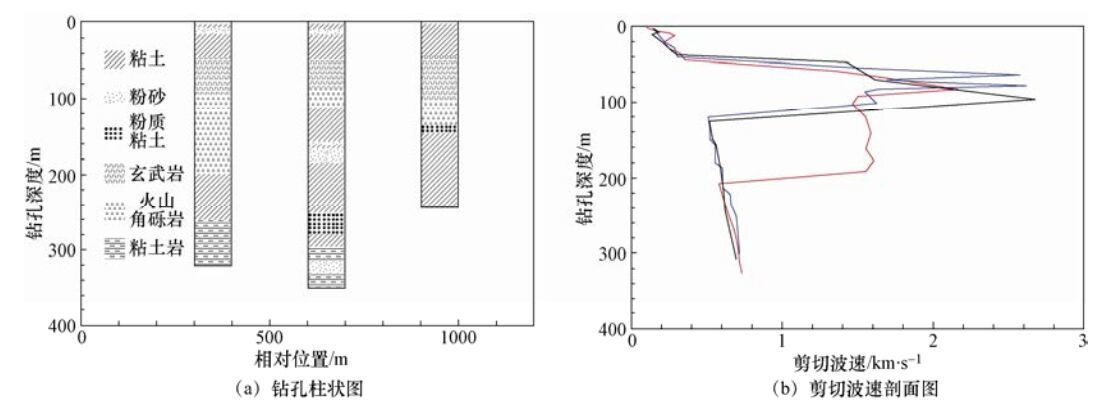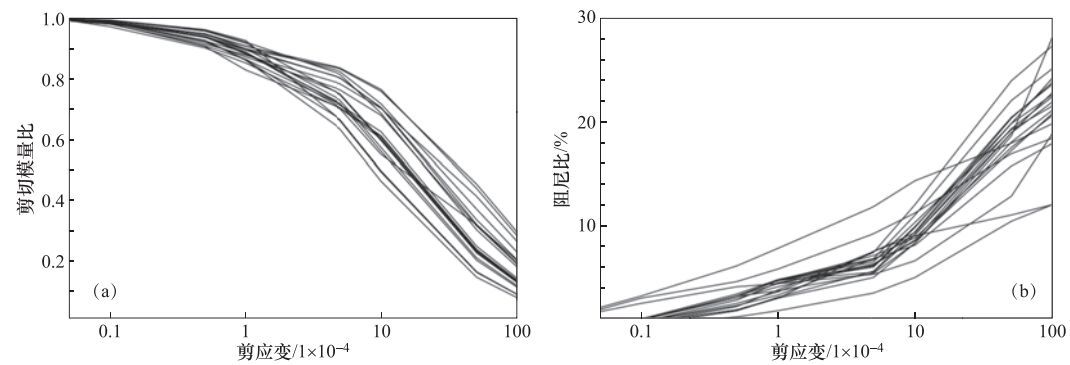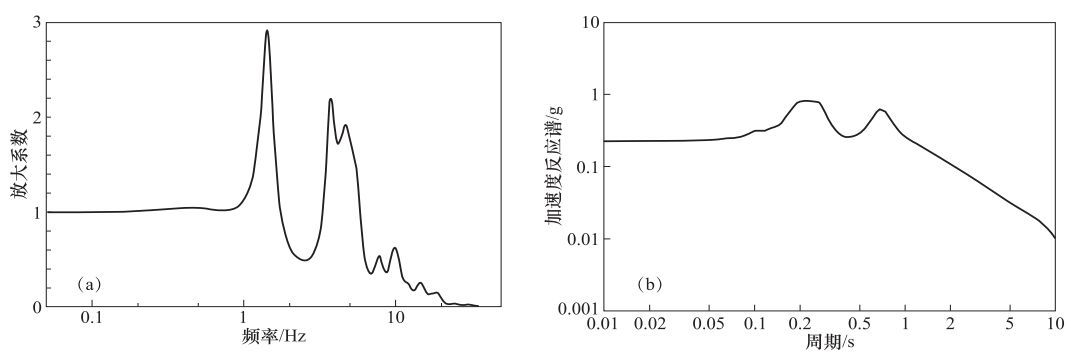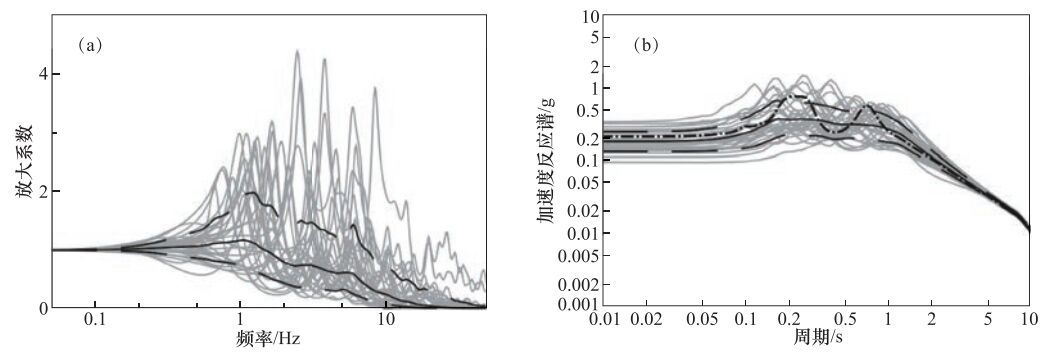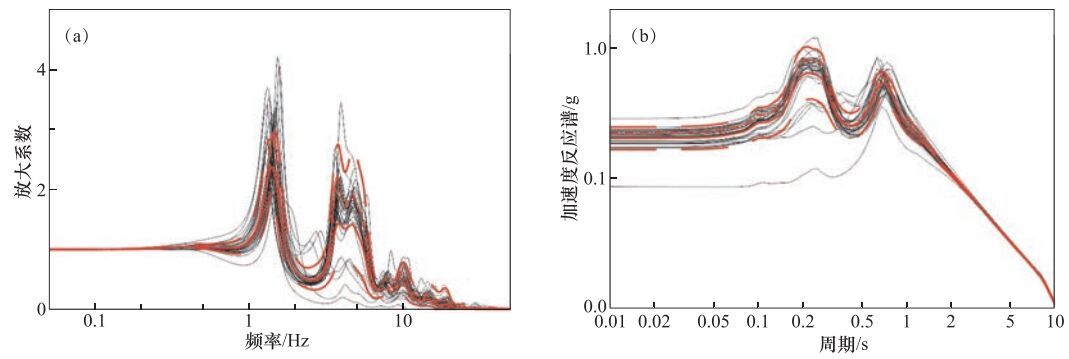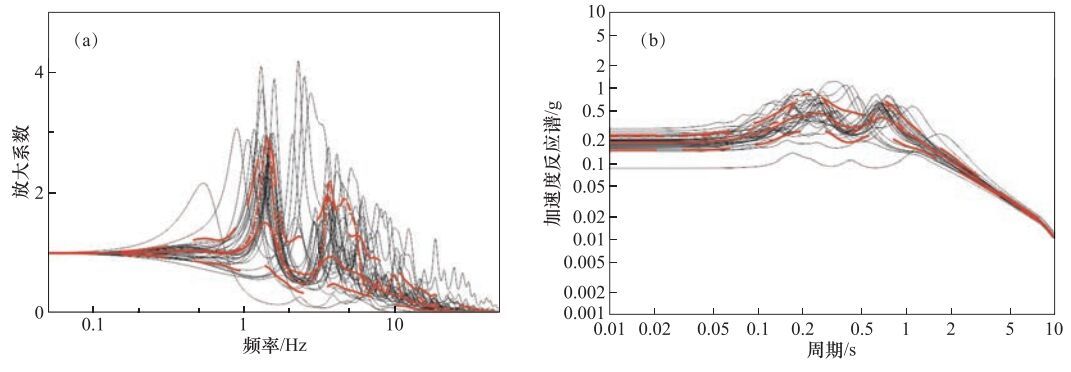Uncertainty in One Dimensional Site Response Analysis for Nuclear Facilities
-
摘要: 本文概述了一维土层地震反应分析等效线性化方法评价结果不确定性研究的进展,比较了中美两国核设施土层地震反应分析中参数不确定性的处理方法。基于实测数据,令参数随机变化,建立土层剖面模型,采用随机振动理论方法,分析了土层动力特性、剪切波速、基岩地震动输入界面对评价结果的影响。结果表明,土层剪切波速的不确定性对评价结果影响最大,主要表现为加速度反应谱平台段的延长。对比参数随机变化模型和最佳估计模型的计算结果可知,随机振动理论反映了土层对基岩地震动的影响,将随机模型分析结果的中值加减1倍标准差基本可以包络最佳估计模型的分析结果。Abstract: After reviewing the recent research development of uncertainty in one dimensional site response analysis for nuclear facility, we compared the procedures to deal with uncertainty of input parameters by China and United States. We generated soil profile models by randomizing measured data, and analyzed site response per random vibration theory. The calculated results show that the most dominate parameter is the velocity of shear wave which extended the peak range of acceleration response spectra. Comparison between results of random models with the best estimated model demonstrates that random vibration theory could introduce the effect of soil on ground motion. The median plus one standard deviation and median minus one standard deviation response spectrum can approximately envelope the best estimated one.
-
Key words:
- Site response /
- Random vibration /
- Nuclear safety /
- Uncertainty
-
表 1 土层样品动力非线性特性
Table 1. The shear modulus and damping ratio vs. strain of soil samples
序号 土层名称 剪切模量比与阻尼比 剪应变γ/10-4 0.05 0.1 0.5 1 5 10 50 100 1 粉质粘土 G/Gmax 0.993 0.987 0.937 0.881 0.718 0.56 0.203 0.113 λ 0.004 0.007 0.028 0.045 0.06 0.098 0.204 0.236 2 粉土 G/Gmax 0.993 0.986 0.936 0.879 0.749 0.599 0.23 0.13 λ 0.004 0.007 0.023 0.033 0.068 0.11 0.22 0.251 3 粉质粘土 G/Gmax 0.996 0.992 0.96 0.924 0.661 0.493 0.163 0.089 λ 0.005 0.009 0.032 0.047 0.065 0.103 0.192 0.215 4 粉质粘土 G/Gmax 0.991 0.983 0.919 0.87 0.762 0.678 0.316 0.188 λ 0.005 0.009 0.032 0.047 0.055 0.091 0.193 0.224 5 粉质粘土 G/Gmax 0.99 0.98 0.905 0.827 0.702 0.601 0.232 0.131 λ 0.005 0.009 0.032 0.047 0.061 0.099 0.198 0.226 6 粉砂 G/Gmax 0.989 0.978 0.947 0.906 0.822 0.716 0.371 0.227 λ 0.005 0.009 0.032 0.037 0.054 0.083 0.186 0.282 7 粉砂 G/Gmax 0.991 0.982 0.936 0.892 0.802 0.704 0.336 0.202 λ 0.005 0.009 0.032 0.047 0.067 0.091 0.189 0.219 8 粉质粘土 G/Gmax 0.992 0.985 0.938 0.896 0.801 0.703 0.321 0.191 λ 0.005 0.009 0.032 0.044 0.063 0.085 0.172 0.208 9 粉质粘土 G/Gmax 0.992 0.984 0.923 0.884 0.703 0.611 0.239 0.136 λ 0.005 0.009 0.032 0.047 0.071 0.088 0.175 0.206 10 粉质粘土 G/Gmax 0.993 0.986 0.935 0.886 0.713 0.624 0.249 0.142 λ 0.002 0.005 0.022 0.038 0.075 0.093 0.198 0.242 11 粉质粘土 G/Gmax 0.99 0.98 0.907 0.862 0.712 0.607 0.236 0.134 λ 0.021 0.032 0.061 0.078 0.118 0.143 0.179 0.198 12 粉质粘土 G/Gmax 0.992 0.984 0.924 0.859 0.633 0.463 0.147 0.079 λ 0.019 0.03 0.046 0.058 0.092 0.112 0.169 0.184 13 粉质粘土 G/Gmax 0.996 0.991 0.958 0.919 0.813 0.685 0.303 0.179 λ 0.002 0.004 0.018 0.03 0.05 0.083 0.18 0.211 14 粉质粘土 G/Gmax 0.989 0.978 0.913 0.876 0.782 0.701 0.413 0.262 λ 0.017 0.025 0.041 0.044 0.053 0.066 0.128 0.189 15 粉砂 G/Gmax 0.992 0.984 0.925 0.861 0.664 0.497 0.165 0.09 λ 0.004 0.007 0.025 0.036 0.074 0.12 0.239 0.273 16 粉质粘土 G/Gmax 0.994 0.989 0.946 0.897 0.728 0.572 0.211 0.118 λ 0.005 0.009 0.03 0.041 0.062 0.086 0.189 0.228 17 粉质粘土 G/Gmax 0.993 0.986 0.943 0.905 0.834 0.763 0.439 0.281 λ 0.005 0.01 0.034 0.048 0.068 0.081 0.157 0.179 18 粉质粘土 G/Gmax 0.995 0.991 0.955 0.915 0.746 0.595 0.227 0.128 λ 0.002 0.004 0.018 0.031 0.056 0.094 0.203 0.238 19 粉细砂 G/Gmax 0.992 0.985 0.934 0.897 0.831 0.757 0.453 0.293 λ 0.001 0.003 0.012 0.018 0.035 0.05 0.104 0.12 -
卢寿德, 2006. GB17741-2005《工程场地地震安全性评价》宣贯教材.北京:中国标准出版社. 沈建文, 刘峥, 石树中, 2010.用震级和距离参数修正土层反应的等效线性化方法.地震学报, 32 (4):466-475. http://www.cnki.com.cn/Article/CJFDTOTAL-DZXB201004008.htm 沈建文, 刘峥, 2011.等效线性化地震反应的震级距离参数调整法及其在地震安全性评价中的应用.震灾防御技术, 6(3):220-230. doi: 10.11899/zzfy20110302 施春花, 吕悦军, 彭艳菊等, 2009.北京地区粉质粘土土动力学参数的统计分析.震灾防御技术, 4(1):69-79. doi: 10.11899/zzfy20090107 石玉成, 蔡红卫, 徐晖平, 1999.场地地震反应分析中的不确定性及其处理方法.西北地震学报, 21(3):242-247. http://www.cnki.com.cn/Article/CJFDTOTAL-ZBDZ199903002.htm 王恒知, 石玉成, 卢育霞等, 2009.人工拟合地震动时程参数对场地反应的影响分析.西北地震学报, 31(2):126-130. http://www.cnki.com.cn/Article/CJFDTOTAL-ZBDZ200902005.htm 王玉石, 李小军, 兰日清等, 2016.强震动作用下土体非线性动力特征研究发展与展望.震灾防御技术, 11(3):480-492. doi: 10.11899/zzfy20160305 Boore D. M., 2003.Simulation of ground motion using the stochastic method.Pure and Applied Geophysics, 160(3-4):635-676. http://www.ce.memphis.edu/7137/PDFs/Boore/boore_stochastic_method_pageoph-1.pdf Boore D. M., Thompson E. M., 2015.Revisions to some parameters used in stochastic-method simulations of ground motion. Bulletin of the Seismological Society of America, 105(2A):1029-1041. doi: 10.1785/0120140281 Brune J. N., 1970. Tectonic stress and the spectra of seismic shear waves from earthquakes. Journal of Geophysics Research, 75(26):4997-5009. doi: 10.1029/JB075i026p04997 Gasparini D. A., VanmarckeE. H., 1976.Simulated earthquake motions compatible with prescribed response spectra.Technical Report R76-4.Cambridge, MA:MIT. Ozbey M. C., 2006. Site-specific comparisons of random vibration theory-based and traditional seismic site response analysis.Austen Downtown, Texas:The University of Texas at Austin. Rathje E. M., Ozbey M. C., 2006. Site-specific validation of random vibration theory-based seismic site response analysis.Journal of Geotechnical and Geoenvironmental Engineering, 132(7):911-922. doi: 10.1061/(ASCE)1090-0241(2006)132:7(911) Rathje E. M., Kottke A. R., Trent W. L., 2010. Influence of input motion and site property variabilities on seismic site response analysis. Journal of Geotechnical and Geoenvironmental Engineering, 136(4):607-619. doi: 10.1061/(ASCE)GT.1943-5606.0000255 Robinson D., DhuT., Schneider J., 2006. SUA:a computer program to compute regolith site-response and estimate uncertainty for probabilistic seismic hazard analyses. Computers & Geosciences, 32(1):109-123. http://dblp.uni-trier.de/db/journals/gandc/gandc32.html#RobinsonDS06 Schneider J. F., Silva W. J., Chiou S. J., et al, 1991. Estimation of ground motion at close distances using the band-limited white-noise model. In:Proceedings of the Fourth International Conference on Seismic Zonation.Stanford, CA:EERI, 4:187-194. Silva W. J., Abrahamson N., Toro G., et al, 1996. Description and validation of the stochastic ground motion model.Technical Report MCEER-08-0019, PG & E. Upton, New York:Engineering Research and Applications Division, Department of Nuclear Energy, Brookhaven National Laboratory, Associated Universities. USNRC, 2007.A performance-based approach to define the site-specific earthquake ground motion.NUREG-1.208.Washington D.C.:USNRC. -



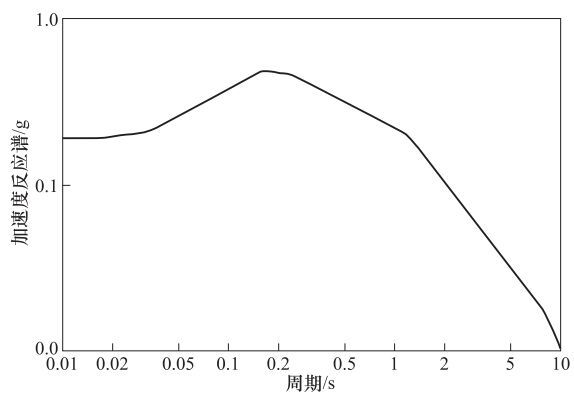
 下载:
下载:
